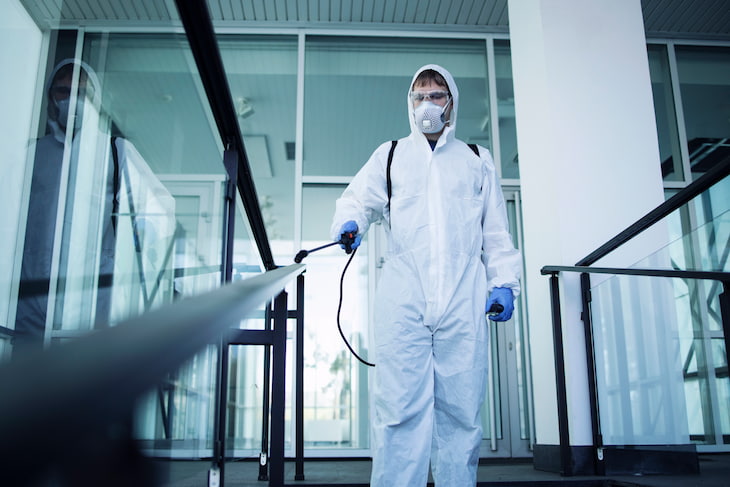
The quality of care in a hospital is largely dependent on its cleaning and disinfection practices. At Weldon, we explain how these methods contribute significantly to a safe hospital environment, which is vital for the protection of both patients and staff.
Cleaning methods
Hospital cleaning follows strict, standardised protocols to minimise the risk of infection. These procedures range from regular surface cleaning to specific protocols for high-risk areas.
- Manual cleaning: involves the use of detergents and disinfectants to physically remove dirt and germs from surfaces.
- Mechanical cleaning: uses equipment such as hoovers and pressure washers, which may be more effective in certain areas.
- Steam cleaning: steam is used to disinfect without the use of chemicals, using heat to kill microorganisms.
Disinfection and sterilisation
- Disinfection eliminates most pathogenic microorganisms, while sterilisation eliminates all of them.
- Chemical methods include disinfectants such as sodium hypochlorite or hydrogen peroxide.
- Physical methods, such as autoclaves and UV radiation are commonly used to sterilise equipment.
Specific protocols for high risk areas
Areas such as operating theatres and intensive care units require special attention due to the high risk of infection. These areas have more stringent cleaning and disinfection protocols:
- Use of hospital grade disinfectants: approved disinfectants that are effective against a broad spectrum of microorganisms, including bacteria, viruses and fungi, should be used. These disinfectants should be used according to the manufacturer’s instructions.
- Frequent cleaning and disinfection: High-risk areas should be cleaned and disinfected more frequently than other areas of the hospital. This includes cleaning high contact surfaces such as handrails, door handles and medical equipment.
- Use of personal protective equipment (PPE): Cleaning staff should use appropriate PPE, such as gloves, masks, gowns and eye protection, to protect themselves and prevent cross-contamination.
- Terminal cleaning protocols: A thorough terminal cleaning should be performed after discharge or transfer of a patient. This includes disinfection of all surfaces, including walls, ceilings and any equipment or furniture in the room.
- Proper waste management: strict protocols for sorting, storage and disposal must be followed. This includes the correct segregation of waste according to its risk level and to prevent cross-contamination.
- Staff training: ongoing training of cleaning staff is essential. It is also important to promote a culture of hygiene and safety among all hospital staff. This includes regular training, updates on best practices and the use of Personal Protective Equipment (PPE).
- Infection control: Infection control protocols should be strictly followed, including hand hygiene and the use of barriers such as curtains and doors to limit the spread of diseases.
- Monitoring and auditing: cleaning procedures should be regularly monitored and evaluated to ensure their effectiveness and adjustments should be made where necessary.
Weldon, excellence in comprehensive cleaning of healthcare facilities
At Weldon, we transform hospital spaces into safe and clean environments. Our approach is simple: deep cleaning and safety for patients and staff.
Our team, trained in the latest cleaning techniques, is committed to creating healthy environments in hospitals and clinics. At Weldon, every corner is a reflection of our promise of quality and confidence in hospital cleaning.